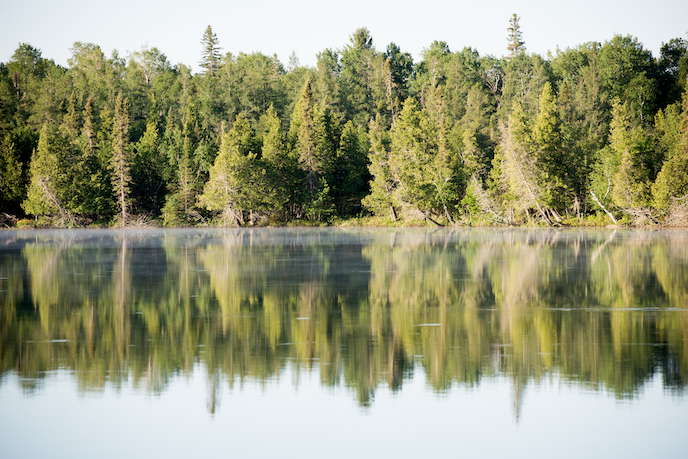Menu
Environment

Climate Change
We believe we have a role to play in mitigating the impacts of climate change—both through our innovative products and by limiting the potential environmental impacts of our operations. As detailed in our Sustainability Report, climate change considerations are incorporated into the way we do business, from product development to product end-of-life.
LP products store carbon over their lifetime. By installing our products over more energy intensive alternatives, such as cement and steel products, our customers are also helping to reduce emissions.

Our Sustainability Report contains the information we use to assess our climate impacts, including our Scope 1, 2 and 3 greenhouse gas emissions and energy use metrics, as well as the steps we’ve taken to identify and address potential climate-related risks and opportunities.
We recognize we have more work to do to set emissions targets and emissions reduction strategies. In the future, we will conduct detailed assessments of energy efficiency, waste and water to better deliver on our commitment to reducing our environmental impact.
Sustainable Manufacturing
Our manufacturing systems are designed to reduce our environmental impact, including limiting non-GHG air emissions, using renewable energy sources and continuously evaluating our operations for efficiency improvements.
We ensure that very little fiber is wasted in our manufacturing process. In fact, 99% of all the fiber we utilize either goes directly into the product or is combusted to generate renewable thermal energy. More than 80% of total energy used is renewable, produced on-site from recycled wood biomass residuals, that help offset the use of fossil fuels. In a strong example of our inherently sustainable operations, our manufacturing processes use very little water. In several of our facilities, we use centrifuges to clean water and evaporators to decrease the amount of water leaving the manufacturing process., see our Sustainability Report.
In 2023, 80% of total energy used was from renewable biomass sources.
Responsible Forest Management and Reforestation
Guiding by our Fiber Sourcing Policy, we hold ourselves and our suppliers accountable for responsible forest management. We were early adopters of forest certification standards, including the Sustainable Forestry Initiative® and the Programme for the Endorsement of Forest Certification (PEFC)—standards that require thorough planning, research and consultation.
100% of the wood fiber we source is vetted through stringent forest certification standards.
We believe sustainable forestry is a critical tool for mitigating the impacts of climate change. As such, we carefully plan our harvest activities.
The majority of our northern manufacturing operations use trembling aspen, a deciduous hardwood tree known for its rapid self-regeneration. In Canada, when we harvest areas where trembling aspen is found with other evergreen species, we work to ensure these forests regenerate to their original composition soon after harvest through re-planting programs.
Our rigorous forest management practices extend into Canada’s boreal forest. Our partnership with Ducks Unlimited Canada (DUC) further demonstrates our commitment to conserving plants and wildlife across boreal wetlands and provides critical research for understanding the role these ecosystems play in mitigating climate change. For more information on our responsible forest management and reforestation practices, see our Sustainable Forestry brochure.
- PEFC Chain of Custody Certificate
- SFI Chain of Custody Certificate
- SFI Forest Management Certificate
- SFI Fiber Sourcing Certificate
- ISO 14001 Certificate
Certificates
Biodiversity and Habitat Restoration
We work to protect and maintain biodiversity in and near our operations, primarily by conducting biodiversity assessments before we begin operating to understand and mitigate potential biodiversity risks. Our forest management process helps preserve a range of age classes and forest types to protect habitats for plant and animal species that require younger as well as older forests to thrive.
We describe our forest management, reforestation and biodiversity and habitat restoration practices in detail in our Sustainability Report.